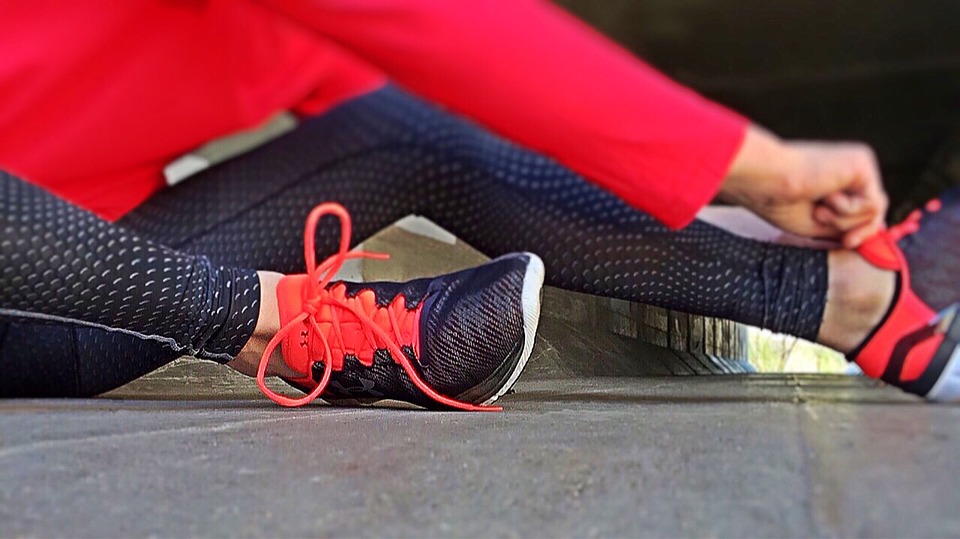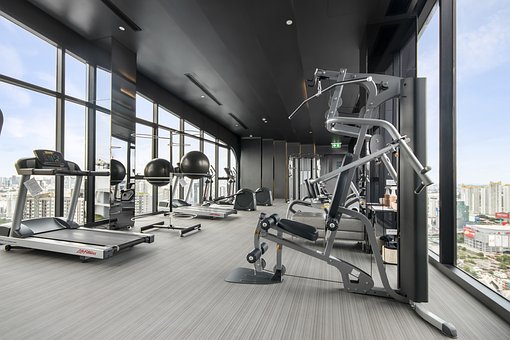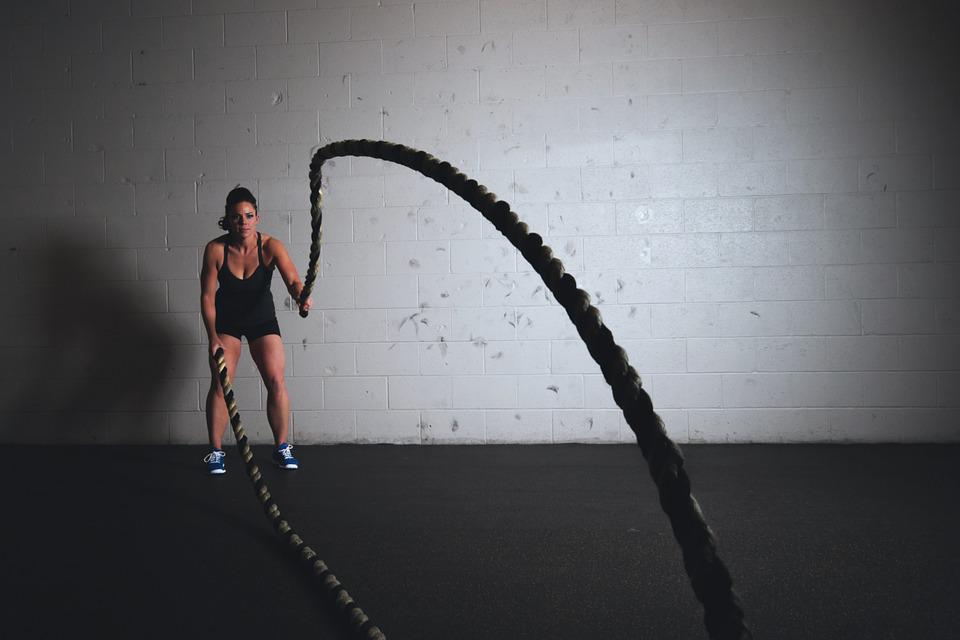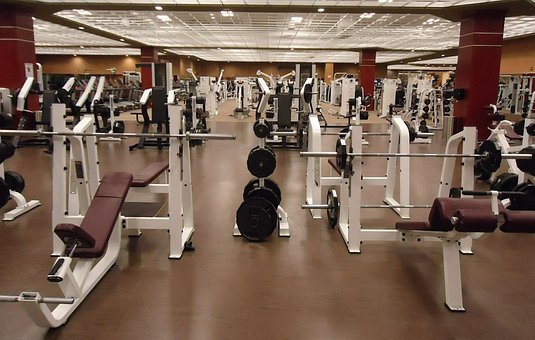
If you’re finding it difficult to get back into working out because of your fears, you’re not alone. It’s normal to feel intimidated by joining a new gym, especially if you don’t know anyone there. However, there are ways to overcome these fears so that you can get back into shape.
A survey of 1,000 Americans found that 65 percent of women and 36 percent of men avoid the gym out of fear of being judged.
Anxiety about how you look, your fitness level, uncomfortable physical sensations, and fear of injury can all make it hard to motivate yourself to go to the gym.
If you’re looking to get fit in the new year, don’t let common fears hold you back. Let us help ease your mind so you can focus on your goals.
Fear: Feeling Self-Conscious About How You Look
Nearly half of people surveyed by Fitrated admitted to not feeling confident about their appearance at the gym. Wearing baggy clothes can make you feel more comfortable, but you can also tuck in your shirt or roll up the sleeves to give it some shape. If you’re not happy with your body, you can use a few tricks to hide trouble spots. For example, if you’re embarrassed by flabby arms, wear a long-sleeve shirt over a sports bra.
According to professional stylist Samantha Brown, garments made of thick, stretchy, or compression fabrics can help slim the body. She advises avoiding shiny fabrics, which can emphasize flaws like cellulite or loose skin. Wearing a darker print can also help to minimize the appearance of these problems. For a loose stomach, she recommends high-waisted leggings or pants with a wide band.
Fear: Getting Out of Breath
You may feel out of breath after a few minutes on a cardio machine. This may cause you to panic. I had a client who explained this fear to me multiple times. She said that she knew it was inevitable to get out of breath, but she couldn’t push past it. She felt silly, but she’d simply get off the machine when the breathing got difficult because she was so scared of not being able to breathe altogether.
Dr. Jamie Wells, the director of Medicine for the American Council on Science and Health, has said that it is not uncommon to get short of breath when exercising, especially if you are not used to it. She has encouraged people to speak to their doctor about it, so that they can be fully informed, and possibly get evaluated. This is because going from a sedentary lifestyle to a heavy-duty workout can cause a lot of problems. It is better to ease into it.
Remember to not go from zero to 100 immediately when you start working out. Check in with your breathing as you exercise. Breathe in through your nose, and out through your mouth. Talk to yourself and tell yourself that it’s okay if breathing becomes more difficult (and that you can always stop the exercise). Start by giving yourself a 1-minute time period to be out of breath. If it’s too difficult to do this on your own, hire a personal trainer for one session and have the goal of getting out of breath while supervised.
You should be aware of any signs that may be worrying, according to Dr. Wells. These signs include, but are not limited to, chest heaviness or pressure, especially with a rapid heart rate, inability to catch your breath, lightheadedness or feeling faint, chest pain, confusion, feeling like your heart is racing, as well as dizziness along with poor color.
Fear: Breaking a Sweat
I had a client who was so scared of breaking a sweat that we had to put a wet washcloth on her neck during her workouts. She felt comfortable sweating if it was hot outside, but not comfortable making herself sweat at the gym. With the washcloth, I was able to help her focus her attention on being cool on a sensitive spot on her body (her neck) while the rest of her body was sweating. Sweating is one of your body’s ways of detoxing, so we also continued to focus on the positive effects of sweating (instead of the discomfort).
Wells says that sweating is normal and helpful to regulate our body temperature and get rid of heat when we are exercising or it is hot outside. She adds that we can replace the fluid we lose through sweating by drinking water, so we don’t need to worry about it.
Fear: Breaking a Machine
Some of my clients have asked me if they can break workout machines by using them too forcefully. They’re usually afraid of damaging an elliptical or spin bike. While it’s possible to break a piece of equipment if it’s used incorrectly and with a lot of force, it’s not very likely. If you’re unsure, ask an instructor or personal trainer to help you adjust the bike or elliptical before using it.
Fear of Pain
Some people avoid exercise, thinking that it will only be painful. But exercise doesn’t have to hurt.
In other words, if your workout is so intense that you can’t breathe, it’s time to back off.
Now, when we say ‘hurt,’ we mean pain, not the changes in your body that come from increased activity, such as increased breathing, sweating, and heart rate.
If you are working out and feel a little burning sensation, it is normal and your body is just adjusting to the exercise. As you get stronger, you will be more tolerant of the sensation and be able to lift heavier weights.
To avoid burning out when you first start an exercise program, it is recommended that you start slowly and do less than you think you can handle for the first few weeks. This will help you develop a healthy habit without the risk of exhaustion.
If you experience shin splints, side stitches, or other common side effects of beginning an exercise program, you may need to stop, take care of the problem, and start again tomorrow. If you feel any sharp pains in the joints, tearing in the muscles or ligaments, or anything else that doesn’t feel normal, stop what you’re doing and seek medical attention.
Fear of Injury
If you’re not used to exercising, it can be hard to tell the difference between normal discomfort from working out for the first time (like aching muscles or being out of breath) and pain from an injury.
If you’re a beginner and you’re afraid you’ll injure yourself, here are some things to keep in mind. First, warming up and cooling down are important. Second, listen to your body. If something feels wrong, stop. Third, focus on form. Don’t sacrifice form for speed or intensity. Fourth, find a balance. Don’t go too hard too fast. Start slowly and work your way up. Fifth, give yourself time. Don’t expect to see results overnight. Rome wasn’t built in a day. Here are some things to keep in mind if you’re a beginner and you’re afraid you’ll injure yourself. First, warming up and cooling down are important. Second, listen to your body. If something feels wrong, stop. Third, focus on form. Don’t sacrifice form for speed or intensity. Fourth, find a balance. Don’t go too hard too fast. Start slowly and work your way up. Fifth, give yourself time. Don’t expect to see results overnight.
- Tune in to what you’re really feeling. It’s inevitable that you’ll feel something while you exercise, but it’s important to separate genuine pain from normal sensations. Be aware of how you feel throughout your workout and do what you can to minimize your risk of injury.
- Get the right shoes. Wearing the running shoes you bought 10 years ago probably isn’t a great idea and can lead to all kinds of problems. Invest in a quality pair of shoes to give your body the support it needs.
- Learn proper form. If you’re lifting weights, one way to hurt yourself is by using bad form or posture during your exercises. If you don’t know how to do the exercises, hire a personal trainer or get a gym employee to show you how the machines work and give you some basics.
- Warm up before your workout. Though you might see people stretching before workouts, you’re better off doing a more specific warm-up. If you’re walking, start with a moderate walk. If you’re running, start with a brisk walk. If you’re lifting weights, do a little cardio first or try a warm-up set of each exercise with light weight. Jumping into your workout without warming up can lead to injuries and pain.
- Work within your fitness level. Many injuries happen when you do too much too soon. Start with a light program and work your way up to more intense and frequent workouts. For example, if you can only walk for 10 minutes, start there and increase your time each week.
Fear: Hurting Your Back
While it is understandable to be worried about getting injured while working out, proper form can help prevent this. When doing lower body exercises, like squats and lunges, it is important to engage the lower abs to support your back. Pulling your navel in towards your spine, and never doing exercises that feel like they are putting strain on your back can help. Work out slowly and pay attention to your body so you can notice any discomfort in your low back. At the end of your workout, stretch by lying down on your back and hugging your knees into your chest for 20 seconds.
Many people think that exercise makes back pain worse, but it can actually help reduce pain and make the back stronger. However, it is important to focus on flexibility and increasing the mobility of the muscles before using strength training to strengthen the back. If you have a back injury, you should consult your doctor or physical therapist before starting any exercise regimen.
Fear: Pulling a Muscle
According to Owens, it’s just as important to warm up before you work out as it is to stretch afterwards. A pulled muscle can cause sharp pain at the site of the injury, as well as reduced range of motion and weakness.
To help prevent this, make sure you stretch properly. Try this:
- Step forward into a lunge position with your right foot forward. Bend the right knee to stretch the left hip flexor, and then straighten the right leg to stretch the right hamstring. Keep moving back and forth without holding the stretch. Switch sides.
- Swing your arms around to stretch your torso. The key is to keep moving during these pre-workout stretches.
Post-workout you can perform static stretches, where you hold them for 20-30 seconds because your muscles are already warmed up from the workout. Here’s an example:
- Move into the same lunge position, but hold it for 20-30 seconds.
- Stretch the hamstring for 20-30 seconds, and switch sides.
Fear of Failure
Many of us experience fear of failure when it comes to exercise. This can manifest itself in a variety of ways, such as not being able to lose weight, not being able to make it through a workout, not being able to stick to an exercise program, or not being able to do the right thing.
The best way to get over your fear is to set a goal that you know you can reach. Having long-term goals are great, but for now just do what you can handle. If you try to do too much it could become an excuse to quit.
Every time you try something new, you are taking a risk. But, sometimes, just the act of taking that risk is all the success you need.














